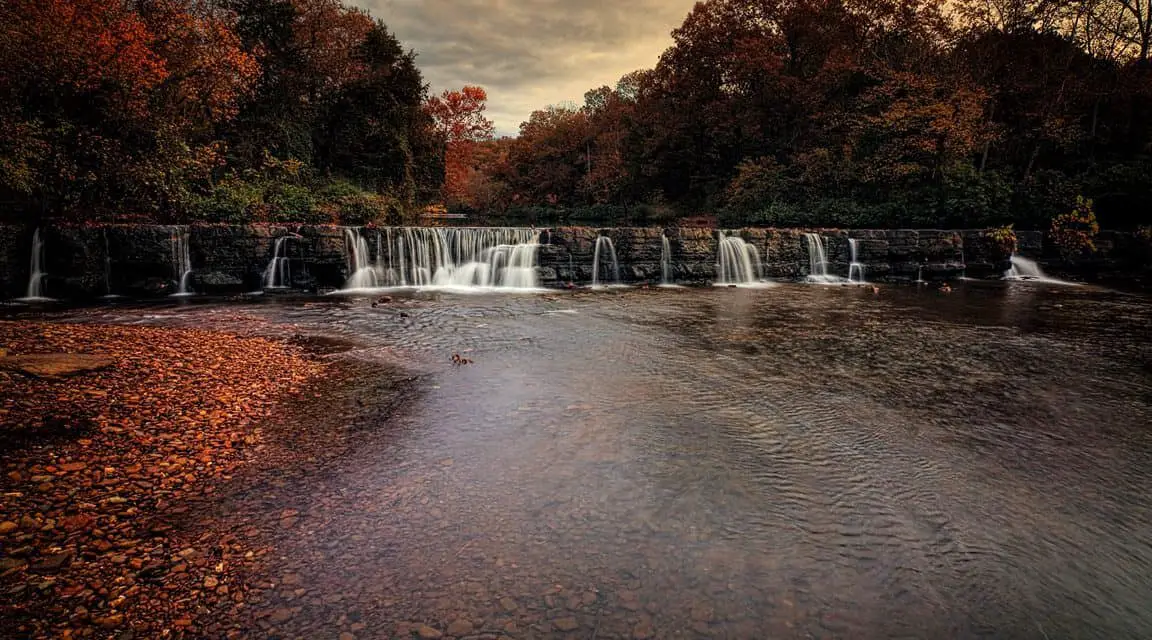So, you’re going to Arkansas! Maybe you’re moving to the Natural State or just visiting for the gorgeous wilderness landscape and outdoor activities. Regardless of why you might be wondering which city in Arkansas has the best weather.
The city in Arkansas with the best weather is Little Rock. Two reasons why the state’s capital has the best weather in Arkansas is because it has milder winters with 1 inch less annual snowfall and 2 fewer days below freezing. As a result, little Rock’s overall annual temperature average is 1.3 degrees warmer than Arkansas’ average.
Whether you’re visiting or moving to Arkansas, Little Rock is the city to go to. Not only is there a wide variety of outdoor activities to do, but it also has the best weather in Arkansas! Keep reading to learn more about why Little Rock has the best weather in Arkansas.
Why Does Little Rock Have The Best Weather In Arkansas
Earning the title of the city in Arkansas with the best weather isn’t an easy task. A combination of weather factors were taken into consideration. So why does Little Rock have the best weather in Arkansas?
Little Rock has the best weather in Arkansas because of its overall milder winters. On average, Little Rock receives 1 inch less snow annually and has 2 fewer days where temperatures reach below freezing compared to Arkansas’ average.
There’s significant variation in weather conditions between cities in Arkansas. Little Rock’s comparatively mild winters are the main reason it has the best weather in the state. There are several other factors that determine this rating, including temperature, precipitation, and summer conditions.
Little Rock Is Warmer Than Most Places In Arkansas
Compared to Arkansas’ average, Little Rock is generally warmer than most places in the state.
- The annual average temperature in Little Rock is 61.8 degrees Fahrenheit, which is 1.3 degrees higher than Arkansas’ average and 7.3 degrees higher than the US average.
- The average high temperature in Little Rock is 72.8 degrees, which is 1.2 degrees higher than Arkansas’ average high.
- The average low temperature in Little Rock is 52.5 degrees, which is 2.8 degrees higher than Arkansas’ average low.
Overall, Little Rock has a warmer climate than Arkansas on average. Additionally, Little Rock is considerably warmer than most places in the United States.
To stay cool in your home, consider BLACK+DECKER’s portable air conditioner for large spaces.
Little Rock Has a Lot Of Precipitation
Like most of Arkansas, Little Rock has a lot of precipitation and ranks slightly higher than Arkansas’ average. You can expect the most rain between March and August and snowfall between December and February.
How Much Precipitation Does Little Rock Get
While you’ll see the most precipitation during the spring and summer rainy season, you can expect rain year-round. But how much precipitation does Little Rock get?
On average, Little Rock receives about 49.57 inches of precipitation annually. Additionally, there are about 102 days with precipitation annually and 71.78 days with more than 0.1 inch of precipitation.
Compared to Arkansas’ average, Little Rock receives about 2 inches more precipitation, has 7 more days with precipitation, and 3.24 more days where there’s at least 0.1 inch of precipitation.
Little Rock Is Very Humid
Like everywhere else in Arkansas, Little Rock is very humid. With 77.14% average annual humidity, Little Rock is close to the state’s average of 76.92%. Wherever you go in Arkansas, though, the average annual humidity is above 70%.
To keep your home comfortable, try BLACK+DECKER’s 3000 Sq. Ft. Dehumidifier.
Summers In Little Rock Are Hot and Humid
Arkansas is known for its hot, humid summers and Little Rock is no different. With higher average temperatures, summers are usually very muggy but not too much worse than other cities in the state.
How Hot Are The Summers In Little Rock
Summers everywhere in Arkansas are hot, with an average July high of 92 degrees Fahrenheit. How hot are the summers in Little Rock, though?
Summers in Little Rock are very hot and humid, with average July high temperatures of 92 degrees Fahrenheit and lows of 73. There are muggy conditions 80-90% of the time in July and about 73 days annually where temperatures exceed 90 degrees.
Little Rock is only slightly hotter than Arkansas’ average. The average July high is the same, but the low is 3 degrees higher. Additionally, in Little Rock, you’ll see about 3 more days annually where temperatures exceed 90 degrees.
Winters Are Very Mild in Little Rock
Not only does Little Rock have mild winters compared to most places in Arkansas, but it has significantly milder winters than most of the United States!
How Much Snow Does Little Rock Get
Arkansas varies considerably in snowfall from city to city. Annual snowfall ranges from 0.45 inches to 10.97 inches. That’s a 10.5 inch difference between the cities with the highest and lowest amounts of snow! So, how much snow does Little Rock get?
Little Rock receives, on average, 2.93 inches of snow annually. Additionally, there are only 1.83 days a year where there’s 1 inch or more snow depth.
Compared to Arkansas’ average of 4.04 inches of snow annually and 2.28 days of 1 inch or more snow depth, you can expect to have less snow than most of Arkansas in Little Rock.
How Cold Are The Winters In Little Rock
Arkansas typically has short, cold winters. However, the severity of winters varies considerably depending on the region of Arkansas. With this in mind, how cold are the winters in Little Rock?
Winters in Little Rock are mild, with average January lows of 34.2 degrees Fahrenheit. There are about 56 days annually where temperatures will drop below freezing in Little Rock.
Average January lows in Arkansas vary between 24 and 34 degrees. Little Rock has warmer winters than most places in Arkansas and it has 2 fewer days where temperatures go below freezing.
Conclusion
If you’re wondering which city in Arkansas has the best weather, the winner is the capital Little Rock. The combination of average temperatures, precipitation, summer conditions, and winter conditions determined this rating. So, if you’re thinking about visiting or moving to Arkansas, you should consider Little Rock!


